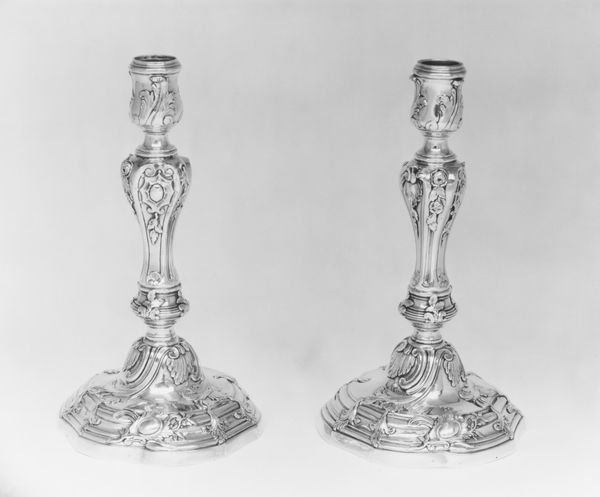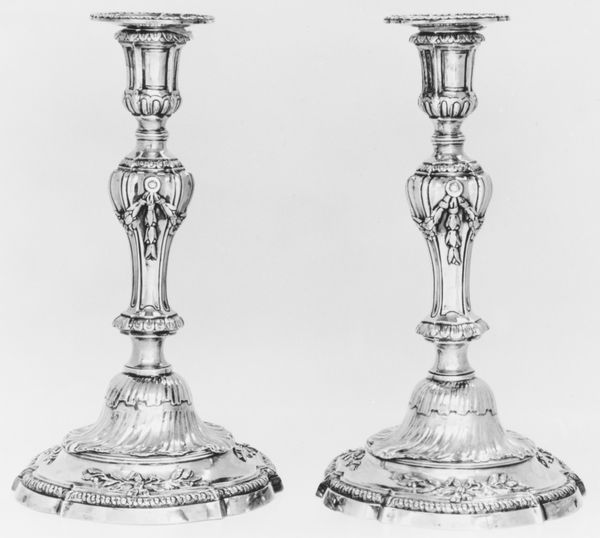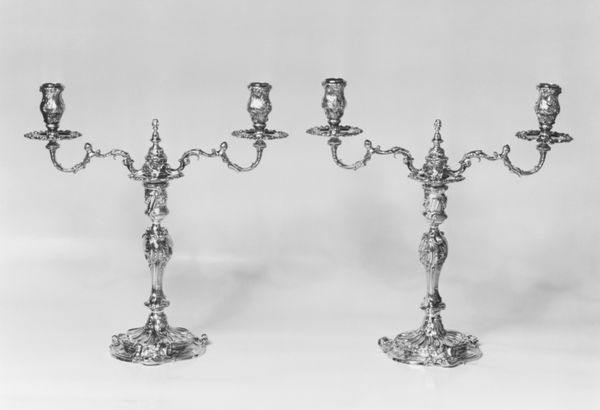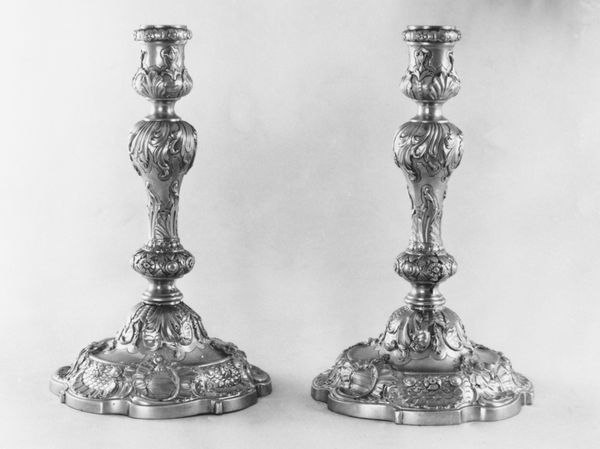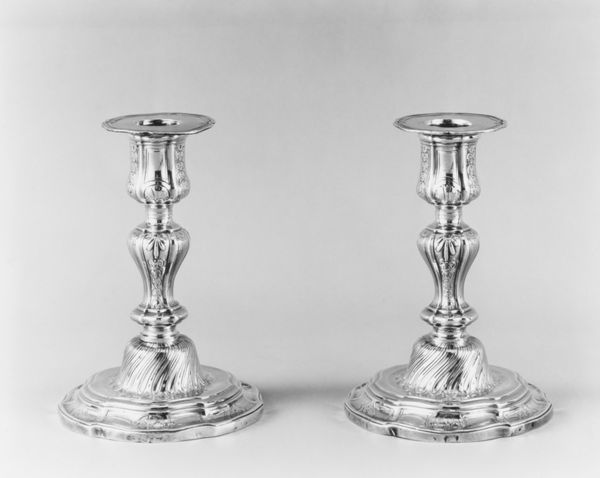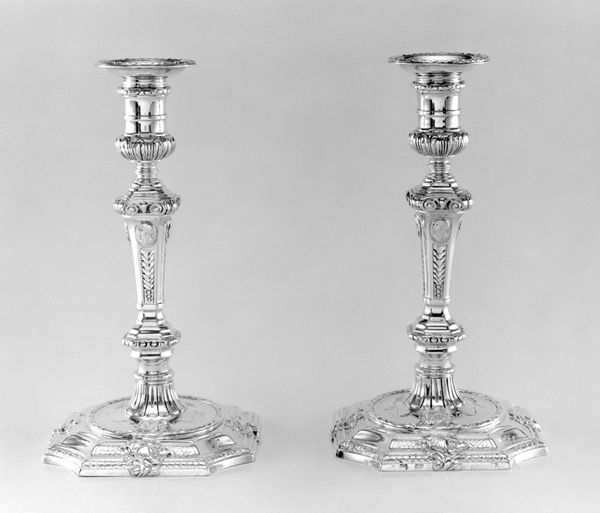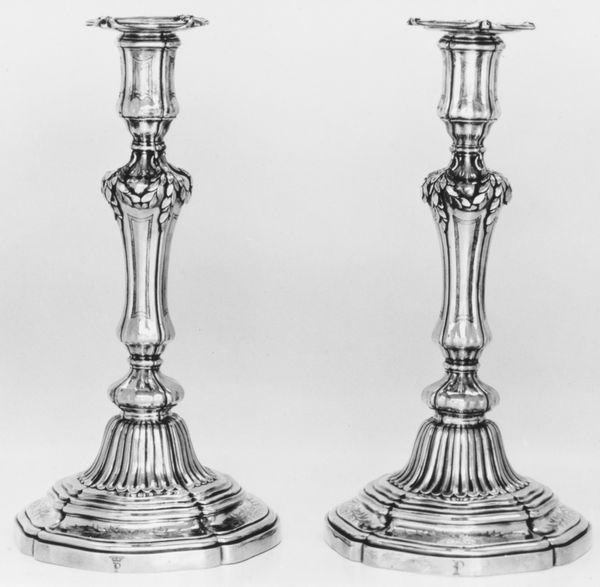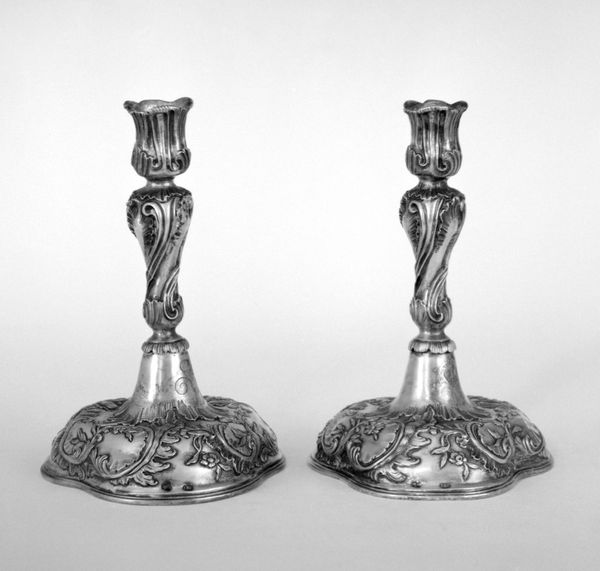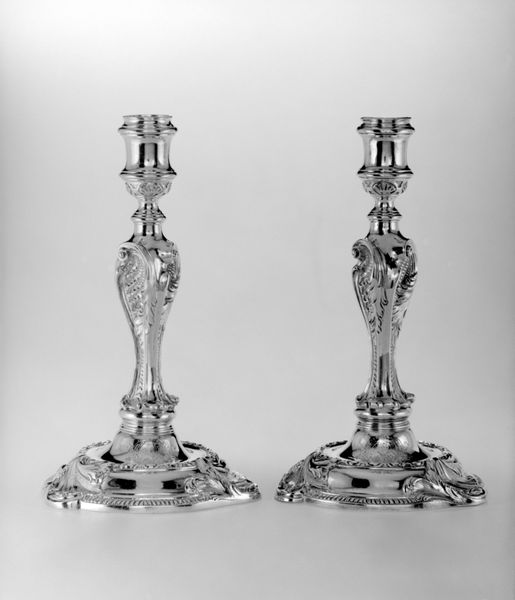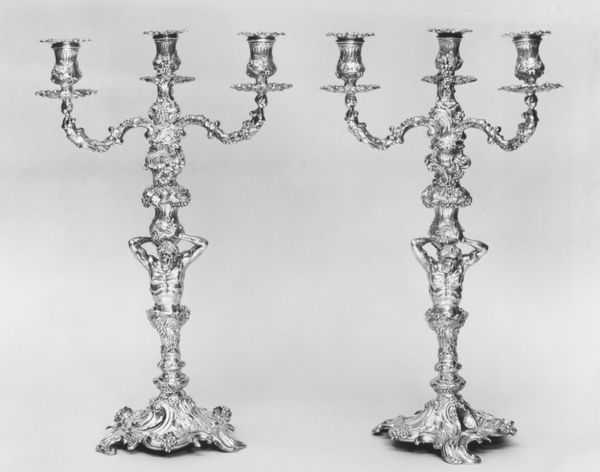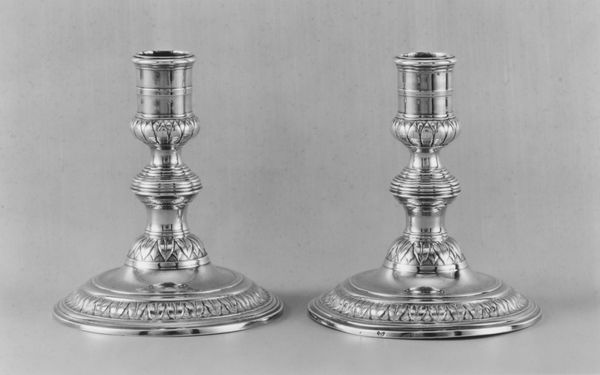
Dimensions: Height (each): 13 1/2 in. (34.3 cm)
Copyright: Public Domain
Editor: This exquisite pair of candelabra, crafted from silver in 1768-1769 by Jean-Baptiste-François Chéret, now resides at the Metropolitan Museum of Art. The Baroque style feels so opulent, almost aggressively decorative. How does an object like this participate in the social landscape of its time? Curator: Good question. These candelabra weren’t simply functional; they were powerful status symbols. Think about the culture of display during the late 18th century. Silver objects, particularly on this scale, advertised wealth and taste. Editor: So, their value extends beyond the material? Curator: Absolutely. Consider who commissioned pieces like these. Probably members of the aristocracy or the increasingly affluent merchant class. Their ownership would reinforce their position in the social hierarchy, creating a visual language of power and influence. Also, think of the political context of pre-Revolutionary France – an elaborate display of wealth and the inequalities of society. Editor: I hadn't thought of them in that light, more like pretty decorations. It’s interesting how art objects can simultaneously represent artistry and socio-political status. Curator: Indeed. Examining the candelabras within their historical context shows they were active participants in constructing and communicating social power. What we see on display in museums were once props in the performance of power. Editor: Thanks. Thinking about these beautiful objects in terms of social structure gives me a fresh appreciation for art history's role in unveiling political structures. Curator: Precisely. It's a continuing dialogue between past artistry and its reflection on societal functions.
Comments
No comments
Be the first to comment and join the conversation on the ultimate creative platform.
